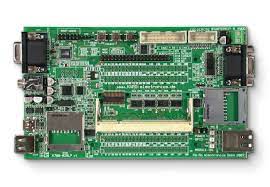Exploring the Power of RPM Package Manager in Linux
The RPM Package Manager in Linux
When it comes to managing software packages in Linux distributions, the RPM Package Manager plays a crucial role. RPM, which stands for “Red Hat Package Manager,” is a powerful tool that simplifies the installation, updating, and removal of software on systems running various Linux distributions.
RPM uses a package format that contains the necessary files, metadata, and scripts to install and configure software applications. These packages can be easily distributed and installed on compatible systems, making it convenient for users to access a wide range of software offerings.
Key Features of RPM Package Manager:
- Dependency Resolution: RPM automatically handles dependencies by ensuring that all required libraries and components are installed when installing a package.
- Verification: RPM verifies the integrity of installed packages to detect any changes or corruption.
- Rollback Capability: Users can easily revert to previous package versions or undo installations if needed.
- Querying: RPM provides tools to query the status of installed packages, check for available updates, and search for specific packages.
- Script Execution: RPM can execute pre-defined scripts before or after installing/removing packages to perform additional configuration tasks.
Usage of RPM in Different Distributions:
RPM is commonly used in Red Hat-based distributions such as Fedora, CentOS, and Red Hat Enterprise Linux. These distributions rely on RPM as their primary package management system. Additionally, other Linux distributions like openSUSE also support the use of RPM for managing software packages.
Conclusion
The RPM Package Manager is an essential tool for effectively managing software installations on Linux systems. Its robust features simplify the process of handling software packages and ensure a smooth user experience. Whether you are a system administrator or an everyday user, understanding how to utilise RPM can enhance your efficiency when working with Linux distributions that support this package management system.
Understanding RPM Package Manager in Linux: FAQs and Insights
- What is the RPM Package Manager in Linux?
- How do I install software using RPM in Linux?
- Can RPM handle dependencies automatically?
- Is it possible to update or remove packages using RPM?
- Are there graphical interfaces available for managing RPM packages?
What is the RPM Package Manager in Linux?
The RPM Package Manager in Linux is a fundamental tool that simplifies the management of software packages on Linux systems. RPM, short for “Red Hat Package Manager,” is a versatile utility that enables users to install, update, and remove software effortlessly. By utilising a structured package format containing essential files and metadata, RPM automates the process of software installation and ensures seamless integration with the system. With features like dependency resolution, verification, rollback capability, querying tools, and script execution support, the RPM Package Manager streamlines the handling of software packages across various Linux distributions.
How do I install software using RPM in Linux?
To install software using RPM in Linux, you can follow a straightforward process. First, download the RPM package for the software you wish to install. Then, open a terminal window and use the ‘rpm’ command with the ‘-i’ flag followed by the name of the RPM package file. This command will initiate the installation process, and RPM will handle dependencies automatically. Once the installation is complete, you can verify that the software was installed successfully by running appropriate commands or checking system menus for the newly installed application. Remember to refer to any documentation provided with the software for specific installation instructions or post-installation configurations.
Can RPM handle dependencies automatically?
Yes, the RPM Package Manager in Linux has the capability to handle dependencies automatically. When installing a software package using RPM, it will check for any required dependencies and ensure that all necessary libraries and components are installed along with the main package. This automated dependency resolution feature simplifies the installation process for users, as they do not have to manually track and install each dependency separately. RPM streamlines the software installation experience by managing dependencies efficiently, making it easier for users to install and use a wide range of applications on their Linux systems.
Is it possible to update or remove packages using RPM?
In Linux systems utilising the RPM Package Manager, it is indeed possible to update or remove packages using RPM. This package management tool provides users with the functionality to easily update installed software packages to newer versions or remove them entirely from the system. By using specific commands and options within RPM, users can efficiently manage their software installations, ensuring that their system remains up-to-date and free of unnecessary packages. Whether updating for enhanced features or removing for decluttering purposes, RPM offers a straightforward solution for package maintenance in Linux distributions that support this package management system.
Are there graphical interfaces available for managing RPM packages?
For users seeking a more intuitive and visually-driven approach to managing RPM packages on Linux systems, several graphical interfaces are available to streamline the process. These graphical tools provide a user-friendly interface that simplifies tasks such as installing, updating, and removing software packages. Popular graphical package managers like DNFdragora, GNOME Software, and KDE Discover offer visual representations of available packages, dependencies, and update notifications, making it easier for users to interact with the RPM Package Manager without needing to rely solely on command-line operations. These graphical interfaces enhance the accessibility of RPM package management for users who prefer a more graphical user interface (GUI) experience.





